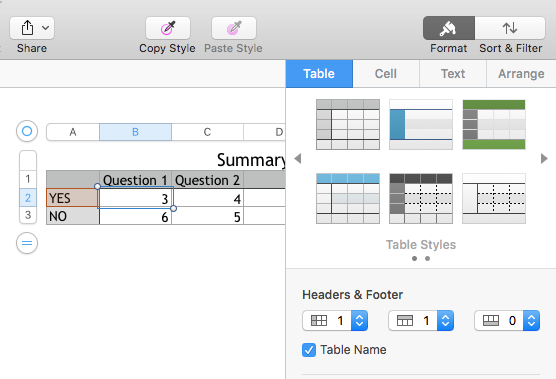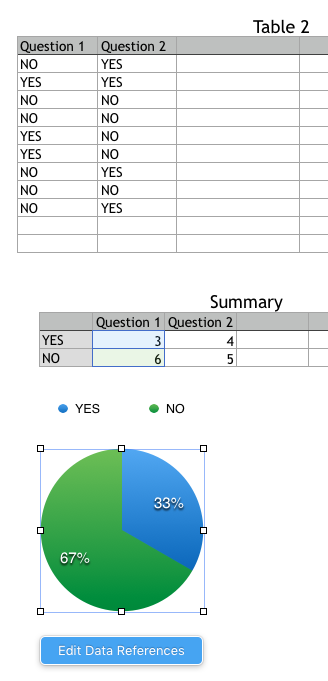I suggest creating a second table where you will summarize the data in your original table... like this:
The table on the top is named "Table 2" and contains columns of data with "YES" and "NO" entries:

The table on the bottom is named "Summary" and contains columns that summarize the data in "Table 2".
In the table "Summary", then first row is a header row and the first column is a header column which are set by opening the table formatter:

The formula in cell B2 is:
=COUNTIF(Table 2::A, $A2)
shorthand for this is:
B2=COUNTIF(Table 2::A, $A2)
which means to select cell B2 then type (or copy and paste from here) the formula:
=COUNTIF(Table 2::A, $A2)
select cell B2, copy
select cells B2 and B3, paste. If you have several questions, then select cell B2 thru the row 3 of the last column,
paste
to make the chart, select cells B2 and B3, then choose the pie chart from the charts menu:
